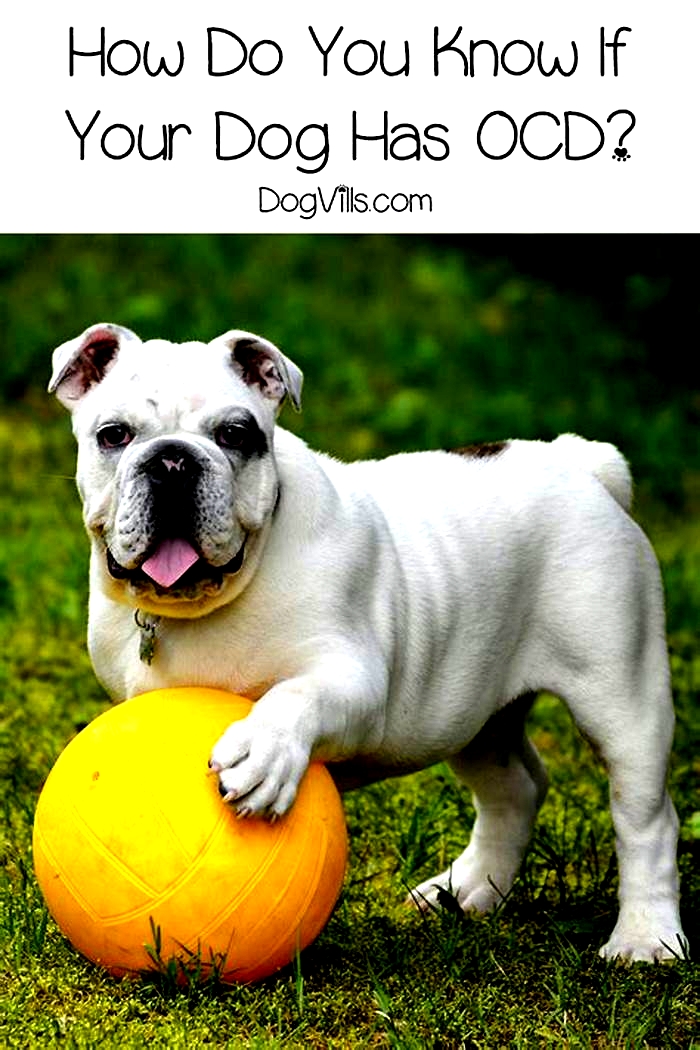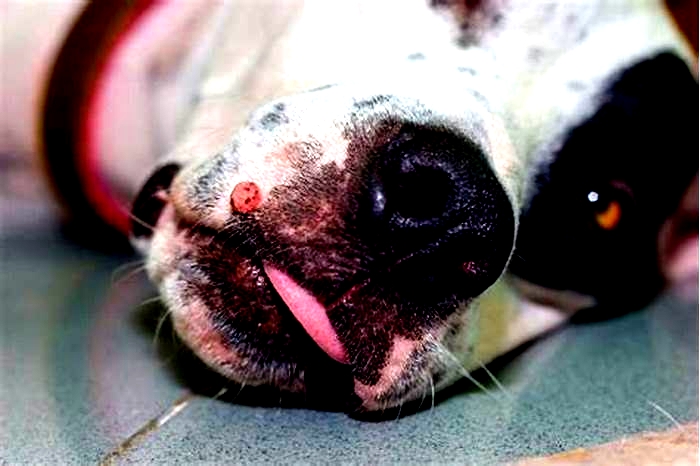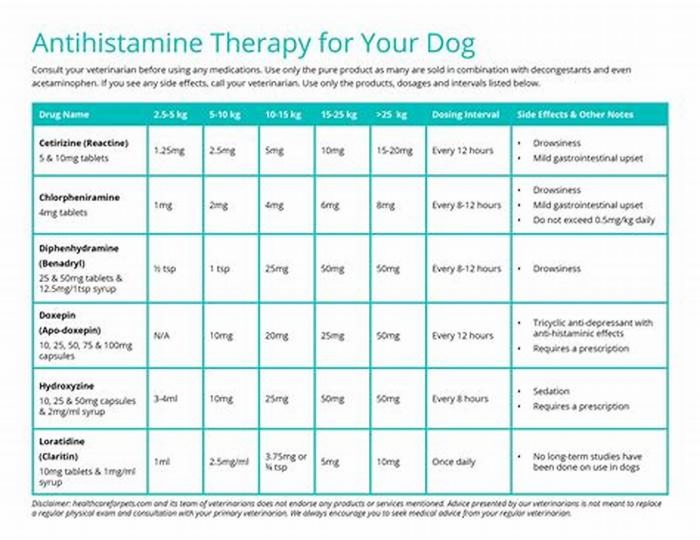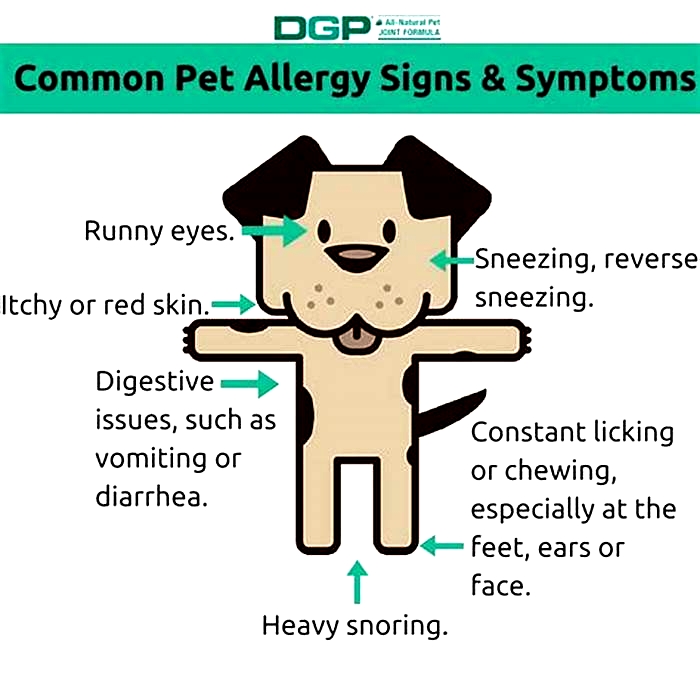Can dogs get botulism
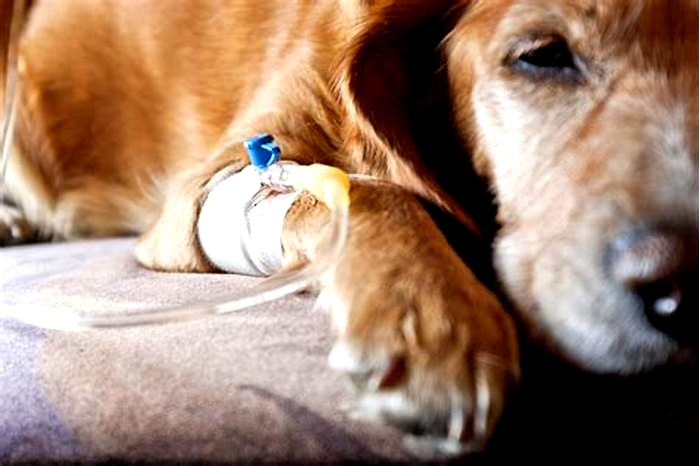
Botulism in Dogs
What Is Botulism in Dogs?
Botulism is a rare but potentially fatal illness caused by a toxin produced by the bacteria Clostridium botulinum. Dogs become affected by eating decomposing animal carcasses or spoiled vegetation where the bacterium grows. Once eaten and absorbed from the stomach and intestines, the toxin attacks the bodys nerves, resulting in weakness (paresis), and eventually the inability to move (paralysis). This can progress quickly to breathing difficulties or even eventual death, if left untreated.
Botulism is considered a medical emergency and can be deadly without prompt treatment. If you believe your pet is experiencing any of the signs of botulism, contact your local veterinarian immediately.
Symptoms of Botulism in Dogs
Clinical signs of botulism may develop within a few hours but can be delayed up to six days. Signs can vary based on the amount of toxin consumed, but the earlier the signs appear, the more serious the disease. Clinical signs of botulism include:
Vomiting/diarrhea
Progressive, symmetrical, ascending weakness that begins in the rear limbs. This is a classic hallmark sign of botulism in dogs. It means weakness that began in the back legs has moved up the body to the front legs, and then to the head and neck. As this occurs, you may see these additional symptoms:
Inability to walk
Inability to hold up the neck and head
Facial paralysis including decreased jaw tone, decreased ability to chew or swallow, and drooling or hypersalivation
Urinary retention (unable to pee) and constipation (unable to poop)
Difficulty breathing
Paralysis of all four limbs (quadriplegia)
Despite being paralyzed, affected dogs are mentally normal, and can still sense their environment and feel pain.
If left untreated, most pets die of botulism due to respiratory distress as the muscles used for breathing, such as the diaphragm, becomes paralyzed and the dog is unable to breathe. However, the paralysis can affect other organs, such as the heartwhich can also be fatal. If your pet is experiencing any of the above clinical signs of botulism, contact a veterinarian immediately.
Causes of Botulism in Dogs
Botulism is caused by the botulinum toxin, which is produced by the bacteria C. botulinum. There are seven subtypes of C. botulinum (A, B, C, D, E, F, and G). All of them have the same effect on the nervous system. Subtypes A, B, E, and F are associated with botulism in humans while most cases in dogs are caused by subtype C.
Once a dog consumes the toxin, it is absorbed in the stomach and intestines and carried in the bloodstream to the nerves. Nerves in the body are used to signal muscles to contract. Botulinum toxin blocks this process so that the muscles are unable to contract, creating muscle weakness and paralysis.
The diaphragm muscle is the muscle separating the abdomen and thorax. Its contraction plays a major role in breathing. Luckily, it is more resistant than other muscles in the body to the botulinum toxin, but once affected, a dog cannot breathe and, without therapy, will die.
How Veterinarians Diagnose Botulism in Dogs
Botulism in dogs can be very hard to diagnose because it is very rare, and the paralysis can mimic other diseases such as tick paralysis, intervertebral disc disease, degenerative myelopathy, toxins, myasthenia gravis, nerve and muscle disease. It is very important to share any history of possible exposure to carcasses, dead animals, rotting vegetation, or raw meat with your veterinarian.
Your veterinarian will start with a thorough physical examination to assess weakness, spinal reflexes, pain, and fever. They will also perform a complete orthopedic and neurologic examination.
Current tests to diagnose botulism involve highly specialized laboratory testing to detect the botulinum toxin in blood, feces, vomit, or in the ingested material. However, these tests are neither timely nor accurate enough to typically establish a diagnosis in time to be useful. Therefore, the diagnosis is typically made based on the history, clinical signs, while ruling out other illnesses with similar signs.
A complete blood count, serum blood chemistry, and urinalysis will likely be recommended for a baseline evaluation, and to help rule out other causes of paralysis. An X-ray may be taken to assess for signs of pneumonia or changes in the esophagus (megaesophagus) commonly seen with botulism.
Treatment of Botulism in Dogs
While there is an antitoxin for botulism, it is not readily available in veterinary hospitals and must be given before the toxin reaches the nerve endings and causes clinical signs. Once a pet develops signs of paralysis, the antitoxin is not effective.
Treatment of botulism in dogs is mainly supportive care. This supportive care can be time-consuming and expensive as it will require hospitalization, likely in an intensive care unit (ICU). Mildly affected dogs may be able to continue to eat and drink on their own with assistance, while more severely affected dogs will likely need IV fluids (to keep them hydrated) and feeding tubes.
Care must be taken to provide sufficient bedding/padding and rotation of positioning to prevent an unmoving patient from developing bed sores. Urinary care must also be tended to either by keeping the patient clean and dry or, if the dog loses the ability to urinate, providing manual bladder expression or urinary catheter care. Antibiotics and supportive medications, including medications for eye lubrication, pain, nausea, or diarrhea may also be given.
If the paralysis continues to progress and affects the diaphragm, dogs may lose the ability to breathe on their own and require manual ventilation with a ventilator.
Recovery and Management of Botulism in Dogs
The botulinum toxin does not damage the nerves, but rather blocks the signals to the muscles to contract. Since there is no nerve damage, supportive care often results in complete recovery. However, clinical signs of botulism often last for two-to-three weeks, and pets may need intense supportive care the entire time.
Prevention of Botulism in Dogs
Prevention is key to protect dogs from botulism. Never let your dog ingest raw meat, dead animals, or spoiled vegetation. It is best to keep a close eye on them when outside or in wooded areas. Unfortunately, there is no vaccine against botulism for dogs.
Botulism in Dogs FAQs
What are the signs of botulism in a dog?
The hallmark sign of botulism in dogs is a progressive, symmetrical, ascending weakness, which means the pet becomes weak in the rear legs and that weakness moves up the body, affecting the front legs, head, and neck. If untreated, the weakness will likely progress to paralysis of all four legs.
Can a dog survive botulism?
If untreated, botulism can result in paralysis of not only the limbs but also the muscles responsible for breathing. This can lead to asphyxiation and death. However, with aggressive treatment, pets can survive botulism and go on to make a complete recovery.
How would a dog get botulism?
The main way dogs get botulism is by eating decaying animal carcasses or rotting vegetation that contain the bacterium C. botulinum. This bacterium produces the deadly botulinum toxin.
How soon do botulism symptoms appear in dogs?
In most cases, clinical signs of botulism appear within the first few hours of eating the toxin, but signs can be delayed up to six days.
Featured Image: iStock/it:SimonSkafar
WRITTEN BY
Veronica Higgs, DVMVeterinarian
Dr. Veronica Higgs is a 2010 graduate from Auburn University College of Veterinary Medicine. She then completed a 1-year rotating...
Botulism in Animals
Botulism in most cases is an intoxication, not an infection, and results from ingestion of toxin in food. There are seven types of C botulinum, differentiated by the antigenic specificity of the toxins: A, B, C1, D, E, F, and G. Types A, B, and E are most important in humans; C1 in most animal species, notably wild ducks, pheasants, chickens, mink, cattle, and horses; and D in cattle. In horses, the most common type in North America and Europe is type B (>85% of US cases), and in the western US type A has been reported in only two outbreaks, both in humans, known to have been caused by type F. Type G, isolated from soil in Argentina, is not known to have been involved in any outbreak of botulism.
The usual source of the toxin is decaying carcasses or vegetable materials such as decaying grass, hay, grain, or spoiled silage. Toxins of all types have the same pharmacologic action. Like tetanus toxin, botulinum toxin is a zinc-binding metalloprotease that cleaves specific proteins in synaptic vesicles. Motor neuron surface receptors vary for the different botulinum toxins; therefore, some of the species differ in susceptibility to the various toxins.
The exact incidence of botulism in animals is not known, but it is relatively low in cattle and horses, probably more frequent in chickens, and high in wild waterfowl. Probably 10,00050,000 birds die in most years, with deaths reaching 1 million or more during the great outbreaks in the western US. Most affected birds are ducks, although loons, mergansers, geese, and gulls also are susceptible. (Also see Botulism.) Dogs, cats, and pigs are comparatively resistant to all types of botulinum toxin when challenged orally; however, individual case reports mention botulism in dogs.
Most botulism in cattle occurs in South Africa and South America, where a combination of extensive agriculture, phosphorus deficiency in soil, and C botulinum type D in animals creates conditions ideal for the disease. The phosphorus-deficient cattle chew any bones with accompanying bits of flesh they find on the range; if these came from an animal carrying type D strains of C botulinum, intoxication is likely to result. Any animal eating such material also ingests spores, which germinate in the intestine and, after death of the host, invade the musculature, which in turn becomes toxic for other cattle.
Type C strains also cause botulism in cattle in a similar fashion. This type of botulism in cattle is rare in the US, although a few cases have been reported from Texas under the term loin disease, and a few cases have occurred in Montana. Hay or silage contaminated with toxin-containing carcasses of birds or mammals and poultry litter fed to cattle have also been sources of type C or type D toxin for cattle (forage botulism). Big bale silage and haylage seem to be a particular risk and result in botulism problems if fermentation fails to produce a low and stable pH (< 4.5).
Botulism in sheep has occurred in Australia, associated not with phosphorus deficiency as in cattle, but with protein and carbohydrate deficiency, which results in sheep eating carcasses of rabbits and other small animals found on the range. Botulism in horses often results from forage contaminated with type C or D toxin. In six of eight outbreaks of equine botulism associated with type A, the source of infection was confirmed to be hay or silage.
Toxicoinfectious botulism is the term given the disease in which C botulinum grows in tissues of a living animal and produces toxins there. The toxins are liberated from the lesions and cause typical botulism. This has been suggested as a means of producing the shaker foal syndrome. Gastric ulcers, foci of necrosis in the liver, abscesses in the navel and lungs, wounds of the skin and muscle, and necrotic lesions of the GI tract are predisposing sites for development of toxicoinfectious botulism. This disease of foals and adult horses appears to resemble wound botulism in humans. Type B toxin is often implicated in botulism in horses and foals in the eastern US. Toxicoinfection is also suggested as a cause of equine grass sickness (equine dysautonomia) and recently in Japan as a cause of botulism in cattle.
Botulism in mink usually is caused by type C strains that have produced toxin in chopped raw meat or fish. Type A and E strains are occasionally involved. Botulism has not been reported in cats but occurs sporadically in dogs. Type C toxin is usually responsible, but there have been reports in which type D was the source.
What is Botulism in Dogs and What Should I Look Out For?
Botulism in dogs is a rare, but serious condition caused by botulinum, a toxin that attacks the nervous system. This dangerous neurotoxin is produced by the bacterium, clostridium botulinum, which grows rapidly on spoiled meat and vegetation and can be found anywhere in the environment.
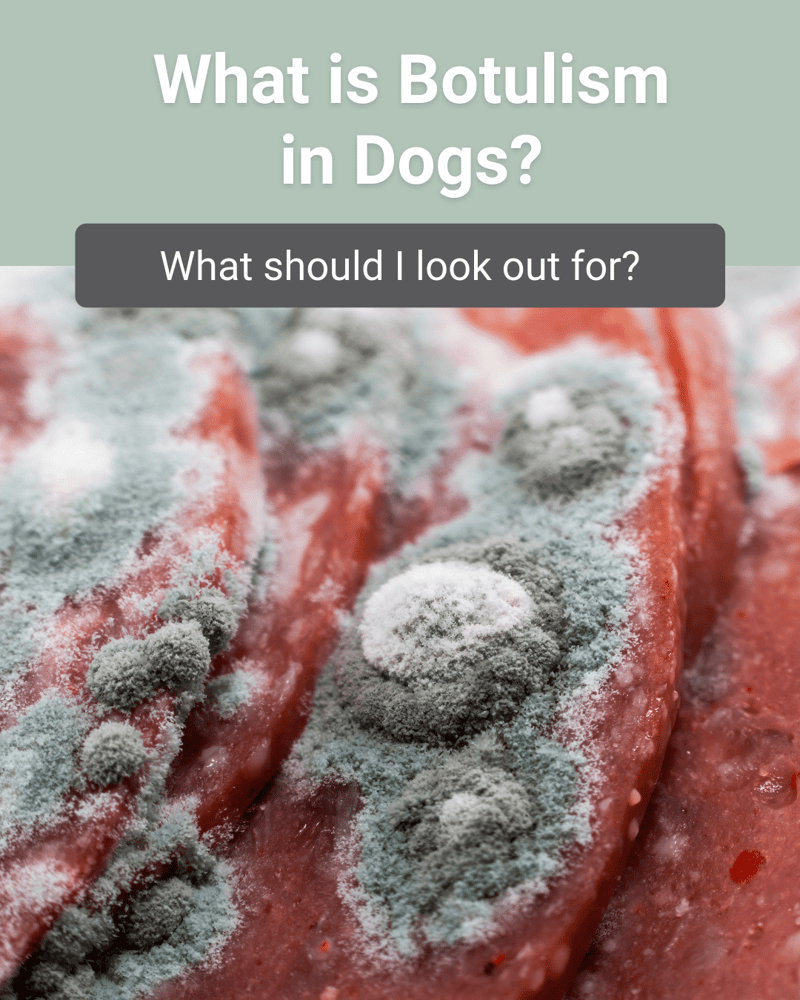
What Causes Botulism in Dogs?
Botulism is most commonly known as a type of food poisoning contracted by eating contaminated food, but it is also transmissible through an open wound.
Botulism in dogs is usually caused by the consumption of dead animals. The toxin is absorbed through the intestines, where it enters the bloodstream and is carried throughout the body, binding to nerve cells.

A culprit we suspect in South Florida is dead iguanas. This can be particularly prevalent in colder weather when they tend to slow down and fall out of tall trees, saysDr. Simon Kornberg, Veterinary Neurologist at Southeast Veterinary Neurology.
It is also possible for dogs to get botulism from canned food that has been improperly canned or became damaged. If you see that a can is bulging or dented, throw it out. Clostridium thrive without oxygen, and the can may be bulging due to a buildup of gasses released by the bacteria when reproducing. Theres no reason to risk even the slightest chance of your dog becoming sick with botulism.
What are Signs of Botulism in Dogs?
Signs of botulism in dogs can unfold within hours to days after consuming the toxin, with rear limb weakness typically being the first to appear. However, both onset and severity of clinical signs depend on how much of the toxin has been ingested.
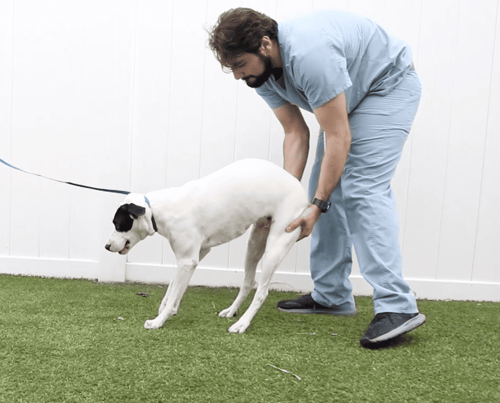
Symptoms of botulism in dogs may include:
- Vomiting
- Progressive symmetrical limb weakness, beginning in the rear
- Decreased spinal reflexes
- Inability to walk
- Inability to hold neck and head up
- Facial paralysis
- Inability to blink, eye inflammation, and dilation of pupils
- Inability to swallow, gag, or chew
- Increased salivation
- Loss of voice
- Diminished to absent reflexes and muscle tone
- Urinary retention and constipation
- Changes in heart rate
- Mentally normal and aware with unaffected sensory function
- Difficulty breathing
- Complete paralysis
Without prompt medical diagnosis and supportive care, botulism in dogs can prove fatal due to paralysis of vital organs, such as the heart, diaphragm, and esophagus.
In addition to this, aspiration pneumonia is a common sequelae, especially in a large recumbent patient, adds Dr. Kornberg.
How is Botulism in Dogs Diagnosed?
Current tests are neither timely nor accurate enough. Therefore, diagnosis is based largely on history, clinical signs, and exclusion of other illnesses.
If you know your dog has been exposed to an animal carcass, raw meat, a questionable can of dog food, or even if your dog has a history of getting into things, let your veterinarian know right away.
Otherwise, diagnosing botulism in dogs can be challenging since its symptoms resemble various other conditions, like nervous system infections, injuries, and illnesses, in addition to other toxicities.
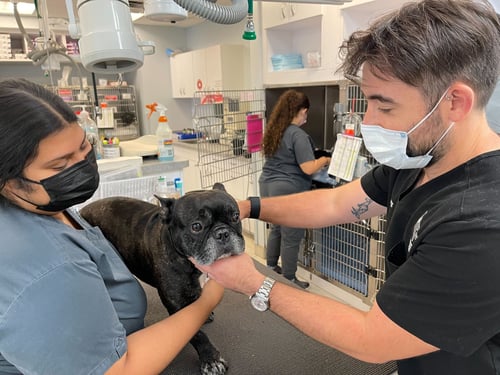
Myasthenia gravis, polyradiculoneuritis, and tick paralysis are similarly presenting diseases that must always be ruled out first, Dr. Kornberg points out.
How is Botulism in Dogs Treated?
It is important to understand that botulism in dogs is not a bacterial infection that can be treated with antibiotics, but rather an intoxication. A dog with botulism has been poisoned by a toxin.
While an antitoxin does exist, Dr. Kornberg warns that, It can be extremely difficult to acquire, and it does not work as a cure. Its really only effective in reducing the duration of symptoms for unbound toxin. It is also off-label in canine patients, as it is specifically for equine patients. In addition to this, it has a short shelf life and carries a risk of a transfusion reaction.
Therefore, treatment of botulism in dogs is mainly supportive. Supportive treatment means managing symptoms, making your dog comfortable, and boosting your dogs immune system so its body can fight off the toxin. Treatment protocol depends on how severely your dog has been affected by the toxin and can range from a short hospitalization with IV to several weeks in an intensive care unit.
Treatment of botulism in dogs may include:
- IV fluids
- Antibiotics to treat secondary infections
- Ointment to keep eyes moist
- Assistance eating and drinking
- Upright feedings and antacids to prevent aspiration pneumonia
- Soft, padded bedding
- Urinary catheter or expressions
- Ventilator for respiratory dysfunction
- NG or G tube for nutrition
- Regular turning of patient to prevent pressure sores
- Passive range of motion (PROM) and massage
- Physical therapy
What is the Prognosis for Botulism in Dogs?
The prognosis for botulism in dogs depends on the amount of toxin ingested, combined with the size, general health, and clinical picture of an individual dog. If there is not too much toxin in a patients system and/or the diagnosis is made early, the prognosis is better than it is for a patient with large amounts of toxin in its system and/or when the disease has progressed.
The good news is that with todays specialized veterinary care, most dogs do get better from supportive treatment, with recovery often taking around three weeks.
To Learn More About Botulism in Dogs Contact Southeast Veterinary Neurology
Southeast Veterinary Neurology is here to support you and your family through canine neurological challenges. Please reach out to our compassionate team of experts in Miami, Boynton Beach, Jupiter and Virginia Beach! We are available around the clock every single day to treat neurological emergencies, including botulism in dogs.





